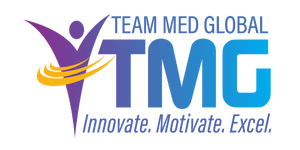 Collaboration is an essential skill for any MSP, and is a key driver of personal effectiveness in TMG’s EMSP Core Competency Model. Teams made up of collaborative members can achieve remarkable results by harnessing the diverse skills, perspectives, and knowledge of members. Let’s look at the common issues that interfere with effective collaboration and explore ways to enhance both individual and team collaboration.
Collaboration is an essential skill for any MSP, and is a key driver of personal effectiveness in TMG’s EMSP Core Competency Model. Teams made up of collaborative members can achieve remarkable results by harnessing the diverse skills, perspectives, and knowledge of members. Let’s look at the common issues that interfere with effective collaboration and explore ways to enhance both individual and team collaboration.
Common Issues that Interfere with Collaboration
Communication Breakdowns: Miscommunication and poor communication channels can lead to misunderstandings, delays, and conflicts among team members.
Lack of Trust: Without trust, team members may be hesitant to share ideas, leading to a stagnant and unproductive environment.
Competition over Collaboration: When the workplace promotes competition over teamwork, it can hinder the spirit of cooperation.
Diversity and Inclusion Challenges: Diverse teams bring unique perspectives, but they may also encounter difficulties in understanding and valuing differences.
Time and Resource Constraints: Heavy workloads and tight deadlines can hinder team members from dedicating sufficient time to collaborative efforts.
Tips for Increasing Individual Capacity for Collaboration
Active Listening: Practice active listening by giving your full attention to your colleagues, understanding their viewpoints, and validating their contributions.
Embrace Empathy: Empathy fosters understanding and compassion, enabling you to relate to your teammates on a deeper level.
Open-Mindedness: Cultivate an open mind, be receptive to new ideas, and avoid dismissing suggestions without careful consideration.
Build Trust: Demonstrate integrity, reliability, and confidentiality to build trust with your colleagues.
Improve Communication Skills: Work on enhancing your verbal and written communication skills, as clear communication is the backbone of collaboration.
Tips for Building Team Collaboration
Establish Shared Goals: Define clear, measurable, and achievable goals that unite team members and align them towards a common purpose.
Promote Psychological Safety: Ensure team members feel safe to express their opinions, take risks, and make mistakes without fear of judgment or retribution.
Delegate Roles and Responsibilities: Assign roles based on individual strengths, expertise, and interests to encourage a sense of ownership and commitment.
Regular Team Building Activities: Organize team-building exercises, workshops, and social events to foster camaraderie and strengthen relationships.
Use Collaboration Tools: Implement technology and collaboration tools that facilitate seamless communication and document sharing among team members.
Celebrate Successes: Acknowledge and celebrate the achievements of the team, fostering a positive and supportive atmosphere.
Resolve Conflicts Constructively: Address conflicts openly and constructively, encouraging a resolution that benefits the team as a whole.
Collaboration in the workplace is a powerful force that can drive innovation, boost productivity, and enhance team member satisfaction. Successful collaboration requires consistent effort and commitment from all team members. By implementing these keys to collaboration, you can unlock the full potential of your team and achieve remarkable results.

